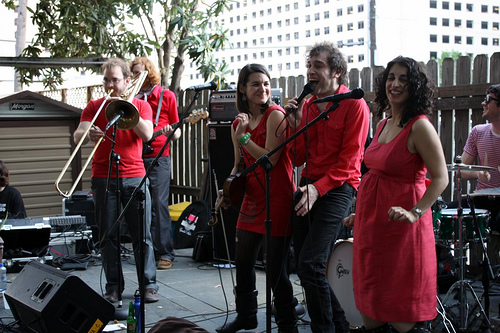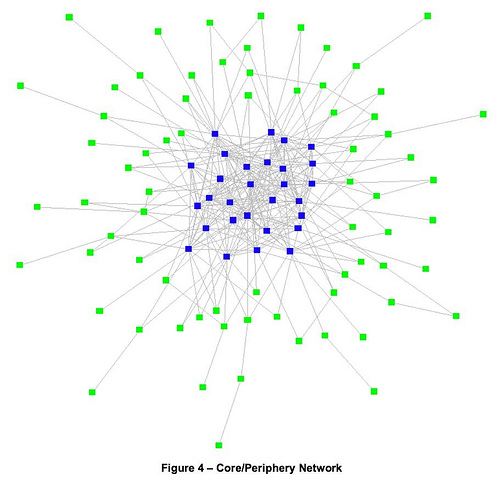“We need to be reaching more people.” The constant refrain we hear from organizations that believe they have something valuable that the world should be paying more attention to. It’s true. But we’re living in an attention economy, where everyone is so flooded with messages, content and noise that all we want to do is filter it out.
Yes, we need to be reaching more people. But to do that, we need strategies to break through the clutter and penetrate people’s eyes, ears, hearts and minds.
It’s important to understand three different approaches to get seen and heard, and then to determine what mix is going to help you achieve your goals. The trifecta: owned, earned, and paid media.
Owned Media: Your House, Your Rules
Owned media includes the channels you have created, and the content that you own. This might be content on your website and your blog. It also includes your Facebook page, YouTube channel, Twitter accounts and other social media channels. A great approach to owned media requires creating strong content and having a strong social strategy to back is up and leverage the time you put into creating that content. If you’re looking to mature your owned content strategy, read up on the practices of “content marketing” and “multi-channel strategies."
Paid Media: Spending Smart
Paid media is, simply, media exposure you pay for. Google AdWords, Facebook advertising, SEO campaigns and other opportunities to pay to get your content showing up in more places. Smart paid media is surgical in its focus – you don’t want to be paying for Google to serve up your ad to the wrong populations – and the content itself needs to have compelling calls to action to even get audiences to engage.
While “digital marketing” and “paid media” used to be synonymous, they are no longer. Paid media may still have its place, but in today’s attention economy, people are much more likely to listen to the recommendations of their friends and to allocate their attention to brands they trust and already have a relationship with in some way.
Earned Media: Network Amplification
Between owned, earned and paid, I would argue that earned media is the most valuable of all. Earned media is when other people, channels and sometimes even brands are talking about you and/or sharing your work and messages. Hopefully these mentions are good. But a bad Yelp review, for example, is also “earned media”. Earned media often is a mention or review of your work, but it can also look like an interview on someone’s blog or a guest blog post where you’re work appears on someone else’s blog.
Earned media is related to other forms of media. When someone shares or amplifies your content on Facebook or posts a link to your blog on Twitter it’s because you did a good job with your owned media. You may use paid media to increase exposure which then helps people pick up on it and share it, tipping into the earned media category.
The benefit of earned media is that it piggybacks your brand on the brand equity of the person or brand that’s sharing it. The hard part of earned media is that you have to earn it. You have less control than owned media (where you create and manage it) or paid media (where you decide what’s worth paying for an how much). What you give up in control however, you gain in other ways, as earned media has greater trustworthiness and authenticity, and can extend to entirely new audiences you otherwise would never be able to reach.
How to Increase Earned Media Coverage of Your Organization
Any smart content strategy includes owned, paid and earned media. I find, however, that many organizations neglect to pay enough attention to earned media, or to really work for it. Some earned media happens by good old fashion luck, but there’s much you can do to cultivate opportunities.
Here are 6 things you can do to increase earned media coverage of your organization:
-
Identify the brands, people and influencers whose channels would be valuable to you. It might be about scale, relevance, audience, or adding the character of their brand to yours.
-
Build relationships with them. Follow them on Twitter, share their content, comment in their channels to add value for them and their audiences.
-
Listen and learn what’s authentic to their audience. Notice where they are offering earned media to others (mentions of other projects, guest blog posts, what they retweet and share). You need to fit into their culture and brand identity – having insight will help you thread that needle.
-
Create content worth sharing. It should be valuable, and add to the social capital of those whom you want to share it. It can be really useful or really funny. Top 10 lists, infographics and well produced videos travel well too. Don’t forget to include share buttons on your owned media to make it easy for people to share it!
-
Use content creation as an engagement strategy. When you’ve told a story or thanked someone in your content, a natural next step is to let them know through social media, which will likely encourage them to share it.
- Use your relationships with others to find guest blogging opportunities (and offer them in return as well). Make sure to position yourself as adding value to their community, not only trying to self promote. Do a good job and you’ll likely be invited back.
How else have you earned your earned media? What people, channels or brands have given you an important boost?
This post is cross posted on the See3 Communications blog.


 A very creative campaign can promote the school, without necessarily talking about academic excellence or the nurturing environment. Take for example a marketing campaign for
A very creative campaign can promote the school, without necessarily talking about academic excellence or the nurturing environment. Take for example a marketing campaign for 
 The campaign ran for five weeks and opened new doors for the school to reach prospective parents. For the first time, Mazel Day School officially partnered with early childhood centers in the area: KingsBay Y, JCH of Bensonhurst, and Shorefront Y. These new relationships can now be leveraged for other partnership opportunities and for reaching prospective parents. The campaign increased exposure of the school to the broader community. Mazel Day School Parents overheard parents who were not part of the school talking about the contest. The Mazel Facebook page experienced a significant boost during the competition period, including 50 news likes on the Facebook page. The last time they had so much traffic was when their school was destroyed during Hurricane Sandy; now the attention was due to a positive story that truly highlighted the school and the community. In their reflection about the implementation of the campaign, the Mazel parents wanted to organize a larger group of parents to lead and implement the campaign to reach an even larger audience of prospective parents.
The campaign ran for five weeks and opened new doors for the school to reach prospective parents. For the first time, Mazel Day School officially partnered with early childhood centers in the area: KingsBay Y, JCH of Bensonhurst, and Shorefront Y. These new relationships can now be leveraged for other partnership opportunities and for reaching prospective parents. The campaign increased exposure of the school to the broader community. Mazel Day School Parents overheard parents who were not part of the school talking about the contest. The Mazel Facebook page experienced a significant boost during the competition period, including 50 news likes on the Facebook page. The last time they had so much traffic was when their school was destroyed during Hurricane Sandy; now the attention was due to a positive story that truly highlighted the school and the community. In their reflection about the implementation of the campaign, the Mazel parents wanted to organize a larger group of parents to lead and implement the campaign to reach an even larger audience of prospective parents.


 I love talking about blogging because it ties in so well with Jewish sensibilities about content and conversation. The Talmud was, arguably, the first blog – a conversation that takes place across time and space, bringing in many voices, contradictory opinions, and preserving it all. Even the format speaks to this. If you’ve ever looked at a page of Talmud (and not gotten completely intimidated, as I usually do), the main content is at the center, the comments in chronological order reverberating out from there. Folks comment on the main idea, then comment on the comments, then comment on the comments’ comments… Ah, Judaism, the ultimate obsessive-compulsive book club.
I love talking about blogging because it ties in so well with Jewish sensibilities about content and conversation. The Talmud was, arguably, the first blog – a conversation that takes place across time and space, bringing in many voices, contradictory opinions, and preserving it all. Even the format speaks to this. If you’ve ever looked at a page of Talmud (and not gotten completely intimidated, as I usually do), the main content is at the center, the comments in chronological order reverberating out from there. Folks comment on the main idea, then comment on the comments, then comment on the comments’ comments… Ah, Judaism, the ultimate obsessive-compulsive book club.